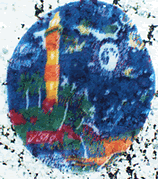Three companies -- AMD, Carl Zeiss SMT, and Qimonda -- are working together on new analytical and characterization methods required for the development of next-generation microchips. The work is being conducted within the framework of the Nanoanalysis Project, which the German Federal Ministry of Education and Research (BMBF) has backed with 12 million Euros. This strengthens the competency of the newly founded Carl Zeiss Innovation Center Dresden, particularly in the fields of semiconductor analysis and metrology.
Dr. Wolf-Dieter Lukas, Head of the BMBF Department "Key Technologies -- Research for Innovations," the strategic setup and expansion of microelectronics competency centers is an important goal. "Only by setting targeted priorities in research funding will we succeed in maintaining
The Carl Zeiss Innovation Center Dresden, an important part of the Nanoanalysis Project, offers ultrahigh resolution particle beam systems that use electron and ion beams instead of light. These systems enable the imaging, analysis and processing of specimens down to the level of individual atoms. In this way, they are playing a decisive role in the characterization of three-dimensional semiconductor structures and in the development of new materials for chip fabrication. "With its
"As a manufacturer of innovative microprocessors, we are faced with the challenge of producing increasingly complex structures with smaller and smaller dimensions and with maximum yield", says Dr. Udo Nothelfer, Vice President AMD Fab 36. "Therefore, process control at an atomic level plays a key role. Through our joint work in the Carl Zeiss Innovation Center Dresden, we have access to leading edge electron and ion microscopes and believe we can therefore further accelerate the introduction of new technologies. The experience gained in industrial utilization may be incorporated at an early stage in the development of future analytical systems."







No comments:
Post a Comment